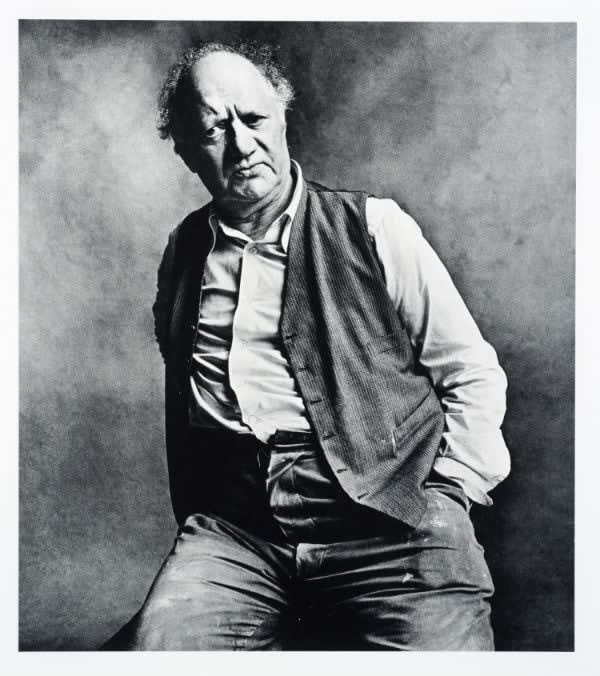-
Artworks
Irving Penn 1917-2009
Jacob Epsteingelatin silver print45.8 x 35.7 (image 23 x 21)2019-20@Irving Penn FoundationPhoto: Irving Penn FoundationIrving Penn is best-known for his fashion photography at Vogue but also his powerful portraiture, modernist compositions and photographic travel essays. His portrait of Jacob Epstein, then aged seventy, was...Irving Penn is best-known for his fashion photography at Vogue but also his powerful portraiture, modernist compositions and photographic travel essays. His portrait of Jacob Epstein, then aged seventy, was shot in London in 1950, four years before Epstein's knighthood, in the last decade of the sculptor's career. Three months earlier, in Paris, inspired by Eugene Atget's photographs of workers, Penn had posed Parisian celebrities, including the sculptor Alberto Giacometti, in their working clothes, accompanied by the tools of their trade. Later, in London, he also photographed London traders including chimney sweeps, newspaper sellers, and a coalman, suitably dusted with soot. Epstein's influence upon Penn can be seen in the latter’s photograph of the Steel Mill Firefighter, reminiscent of Epstein’s 1913 radical, robot-like sculpture, Rock Drill. Penn presents Epstein as a still powerful, working figure, whom, seven years later, in a text accompanying Geoffrey Ireland's photographs of Epstein's collection of ethnographic sculpture, Laurie Lee would describe as ‘a broad-boned working figure, homely as a riveter, untouched by the professional vanities of dress and posture’. The Ben Uri archive also includes three press photographs of Epstein and his work.Provenance
Purchased at auction 2019
Be the first to know – Sign Up
Subscribe to our newsletter and be the first to know about everything new at Ben Uri, including the constantly evolving and expansive online content across our exhibitions, collection and research.
We value and respect your privacy. Your personal data will be kept private and processed securely, according to our Privacy Policy. If you change your mind anytime, you can unsubscribe directly when receiving a mail from us (the link will be at the bottom of the email) or contact us.
* denotes required fields
This website uses cookies to improve your experience. If you are not happy with this, you can opt-out below.


